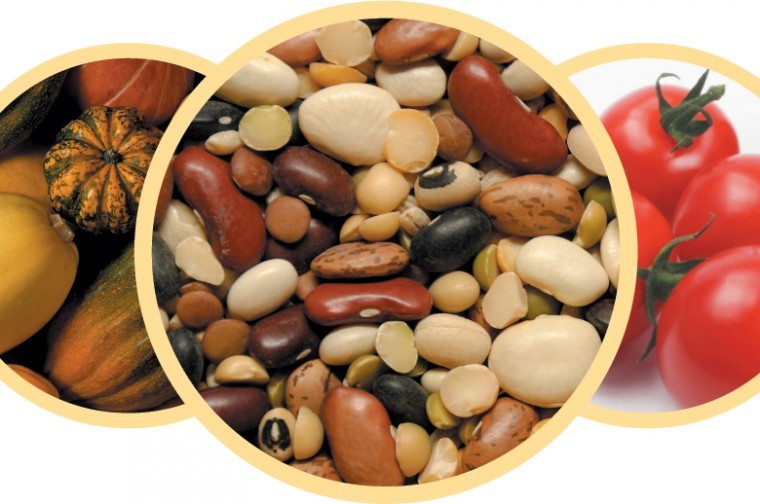Thinking outside the bowl
Published January 11, 2012
“Soup puts the heart at ease, calms down the violence of hunger, eliminates the tension of the day, and awakens and refines the appetite.”
– Auguste Escoffier
ADVERTISEMENT
Chicken soup is not the only soup that nurtures the body and feeds the soul. On a cold winter day, many types of soups served piping hot and heady with the essence of fresh herbs and vegetables may even surpass the curative powers of our iconic chicken soup. Oy vey, did I just say that?
A bowl of good soup evokes childhood memories-memories of walking into the house from school and getting that first whiff of the aroma from the kettle of soup simmering on the stove; of bending over a bowl of soup to inhale the wafting steam; of special times with the family gathered around the pot of soup in the center of the dinner table.
Warm soup can clear a stuffy nose, deliver a jolt of vitamins and nutrients, and elevate our moods. And with just a handful of basic ingredients and a modicum of effort, anyone can create a delicious soup.
Another nice thing about making your own soup is that you can tailor it to your own tastes and preferences. Don’t want pasta in your soup? Substitute cubed potatoes or winter squash. These starches, like pasta, not only add flavor but also thicken the soup. If instead you prefer your soup made just with beans, thicken it by removing a few ladles of beans from the soup before serving, finely mash or puree them, and add them back into the pot. If your soup gets too thick, you can always add water or broth to thin it.
With or without a recipe, the key to becoming a successful soup maven is flexibility. Being flexible eliminates those dreaded last-minute trips to the grocery store for the “missing” ingredient. Having your pantry, refrigerator, and freezer stocked with some of my recommended staples (listed below) means you will always have what you need, even if you don’t have all of the ingredients called for in the recipe.
ADVERTISEMENT
And remember: don’t feel obligated to stay faithful to a particular recipe. Think of a soup recipe as a source for ideas and guidelines. Freely substitute ingredients you happen to have on hand, or ingredients that you may prefer, for those specified in the recipe. Experiment and remember that changes can be made all along the way. With that attitude, your soup will be more to your liking. I like to think of this as “customizing.” Don’t forget that our ancestors in the shtetls of Eastern Europe had little money and certainly no modern supermarkets. Nevertheless, they improvised to create hearty soups that kept their families well-nourished and content.
So what are you waiting for? Pull out that soup pot and let’s get cooking.
Begin by selecting a base for your soup. You can opt for fresh, frozen, canned, boxed, dried, or homemade stock, broth or bouillon. A vegetable stock makes for a lighter soup and will allow family and guests with dietary restrictions to partake, as well. Meat-based soups often have richer flavor and are ideal as one-dish meals.
Don’t have any of the above “stock options”? Don’t fret. You can always rely on water and this combination of aromatics (also known in French cooking as mirepoix): one medium yellow onion, one carrot, and one stalk of celery. Finely dice these vegetables and sauté them together over low heat in a couple tablespoons of butter or oil. Add salt and pepper, to taste, and some dry or fresh herbs that you have and like. Add water, and simmer. You now have a fresh vegetable broth to use as your base.
The next consideration is what ingredients to add to your broth. It is winter. A gazpacho made in February will not taste as good as one made in July, when tomatoes are at their flavor peak. Then again, if you absolutely must have gazpacho this month, skip the tomatoes in the produce section and reach instead for a can of premium San Marzano whole tomatoes.
Likewise, winter root vegetables, as the name indicates, are sweeter when grown in cooler temperatures. Wonderful winter root vegetables for your soups include turnips, kohlrabi, rutabaga, celery root, parsnips, carrots, and potatoes. Other soup vegetables at their best during winter months include hardy greens, such as kale, collard, and chard, and winter squash, such as acorn, butternut, and spaghetti. Incorporating some of these cool-weather gems will result in a more flavorful soup. The added bonus for these ingredients: unlike most of the summer vegetables, many of the winter crops can be stored at length in your refrigerator or in a cool spot in your basement.
But what if you have a craving for homemade soup and you don’t even have the onions, carrots, and celery typically used to make a soup base? Again, be flexible. Here’s a delicious scaled-down soup option: sauté a large handful (15 to 20) of peeled, coarsely chopped garlic cloves in a few tablespoons of olive oil, add 6-8 cups water and a pinch of sage, rosemary or basil, and simmer for 30 minutes. Strain the broth and pour it over a thick slice of toast in a soup bowl. To add a bit more ta’am, top the soup with a dollop of pesto sauce (jars of which can be kept in your freezer). Not filling enough? Top that slice of toast with a poached egg. And, while you are at it, garnish the soup with a sprinkle of Parmesan cheese. Voila, a magnificent soup that is magnificently simple to make. My mouth is already watering.
Whether you plan to serve your soup as a first course, as part of a more elaborate meal, or as an elegant entrée accompanied by good, crusty bread and a salad, hot soup on a cold winter day is sure to make everyone happy.















